Family : Labridae

Text © Giuseppe Mazza

English translation by Mario Beltramini
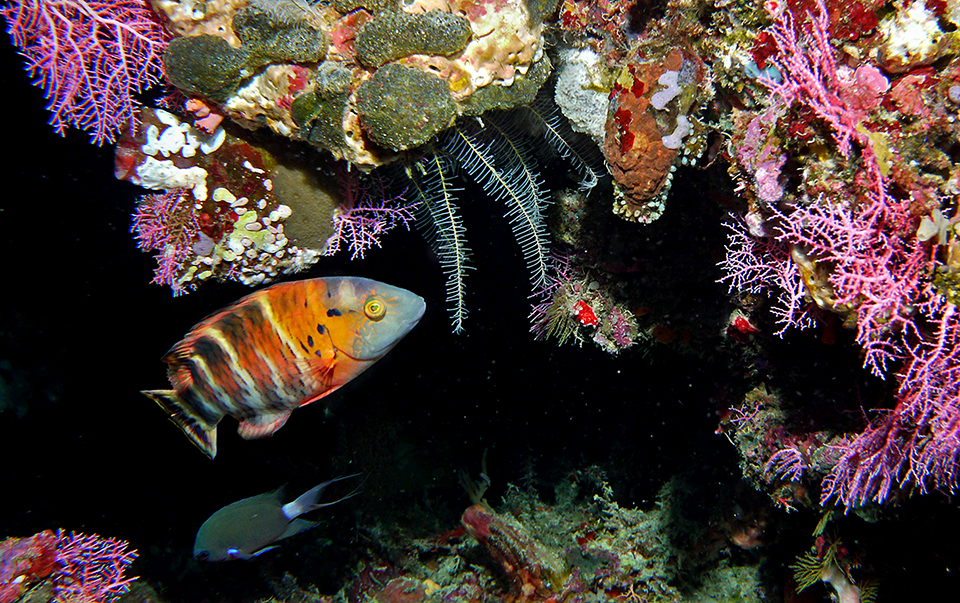
The Redbreasted wrasse (Cheilinus fasciatus) has a very large presence in the tropical Indo-Pacific waters © Gerhard Batz
The Redbreasted wrasse (Cheilinus fasciatus Bloch, 1791) belongs to the class of Actinopterygii, the ray-finned fishes, to the order of Perciformes and to the family of Labridae.
The name of the genus comes from the Greek “cheilos” = lip, with reference to the showy jaws.
The name of the species “fasciatus” = banded in Latin, refers to the vertical bands.
Zoogeography
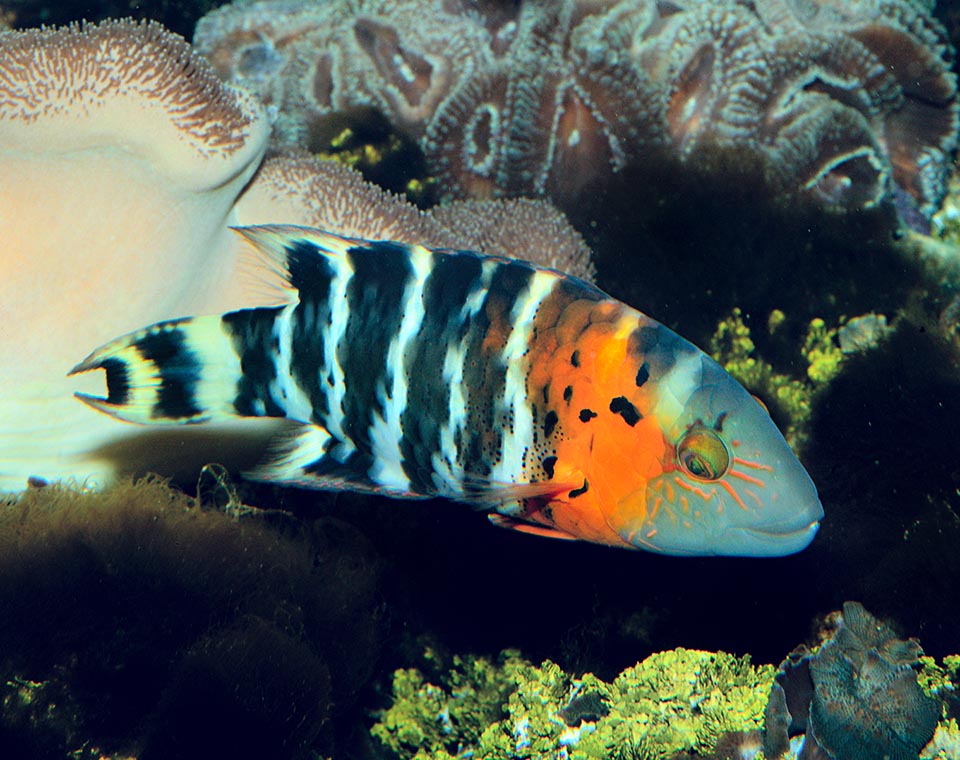
It lives among the corals up to 40 m of depth, distinguishing, besides for its beauty, for the showy jaws evoked in its scientific name © Giuseppe Mazza
It has a very large distribution in the tropical waters of the Indian and Pacific oceans.
Indicatively, we find it in Mozambique, Kenya, Tanzania, Madagascar, in the Red and Arabic seas, at the Seychelles, Mauritius, Reunion, Maldives, in India, Sri Lanka, Thailand, Malaysia, Australia, Indonesia, Micronesia, New Guinea, New Caledonia, Philippines, Taiwan and China up to southern Japan. Eastward, it has colonized Kiribati, Samoa and Tonga.
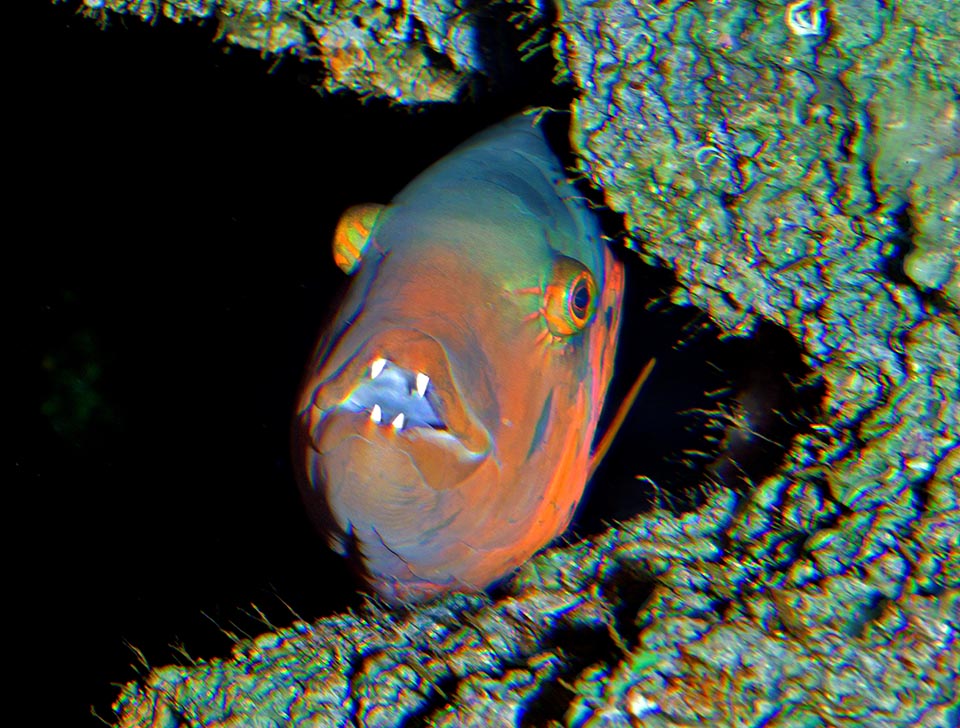
The solid incisors break easily, like a nutcracker, the shells of the mollusks and the armors of the crustaceans and of the sea urchins it eats © Giuseppe Mazza
Ecology-Habitat
It lives in the madreporic formations up to about 40 m of depth.
Morpho-physiology
It may reach the 40 cm. The body is fusiform, compressed on the sides, with big jaws, as the scientific name states.
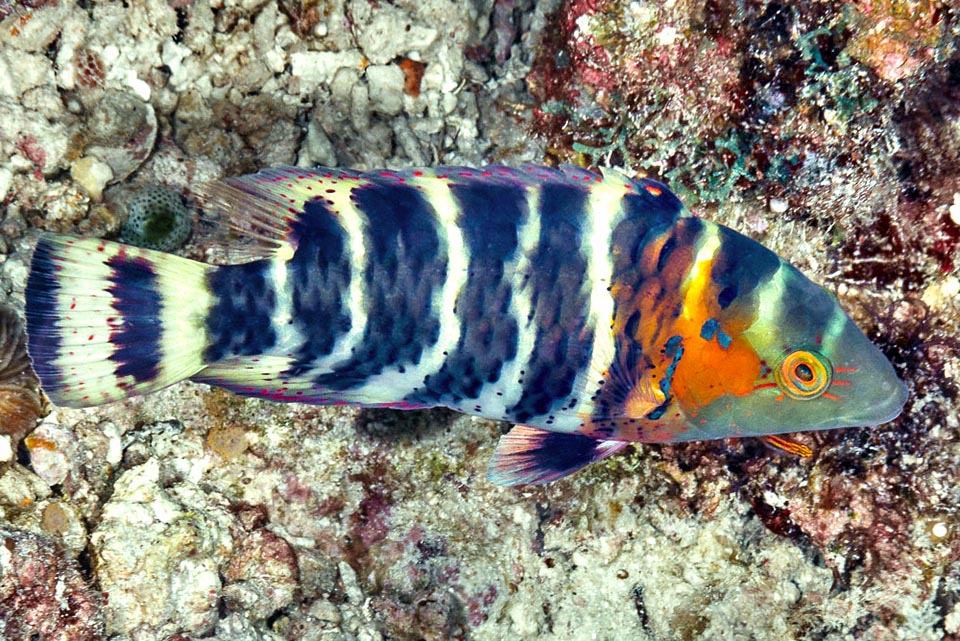
The colour changes depending on circumstances and age. This is the initial stage with the growing red spot and the caudal fin rounded © François Libert
The lower one is prominent in the adults, and allows a glimpse of two solid canines, present also on the upper jaw, used for breaking the shells of the mollusks and the carapaces of the crustaceans.
The dorsal fin has 9 spiny rays and 10 soft; the anal 3 spiny rays and 8 soft; the two ventral and the pectoral ones are unarmed; and the strong caudal is tri-lobed with the central part almost flat and the two extremities elongated in the adults.
The livery is often spectacular.
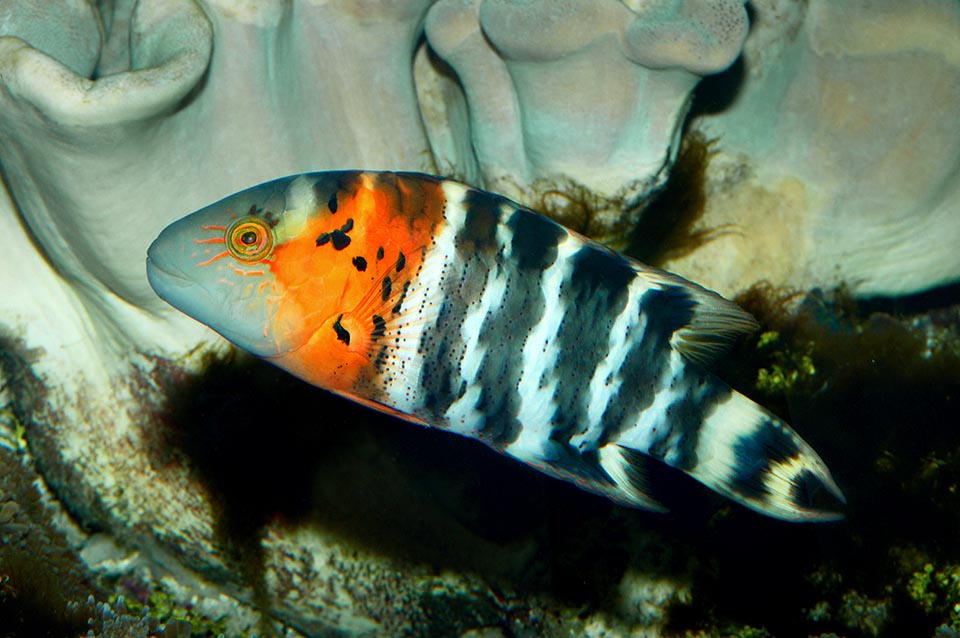
Then it gets longer on the sides while the red zone stretches towards the back colouring the pectoral fins and the pelvic © Giuseppe Mazza
The head, usually with greenish blue, at times also dark, shades is followed by a vertical red-orange zone, spotted of black, with a branch, of the same colour, towards the eye, as the rayed traits surrounding it, as well as the rays of the pectoral and ventral fins.
Then follow clear bands interspersed by wider black bands which interest also the dorsal, anal and caudal fins, this last ends at the centre with the last dark band, whilst on the sides, as well as at the end of the dorsal and the anal, the clear one continues.
Ethology-Reproductive Biology
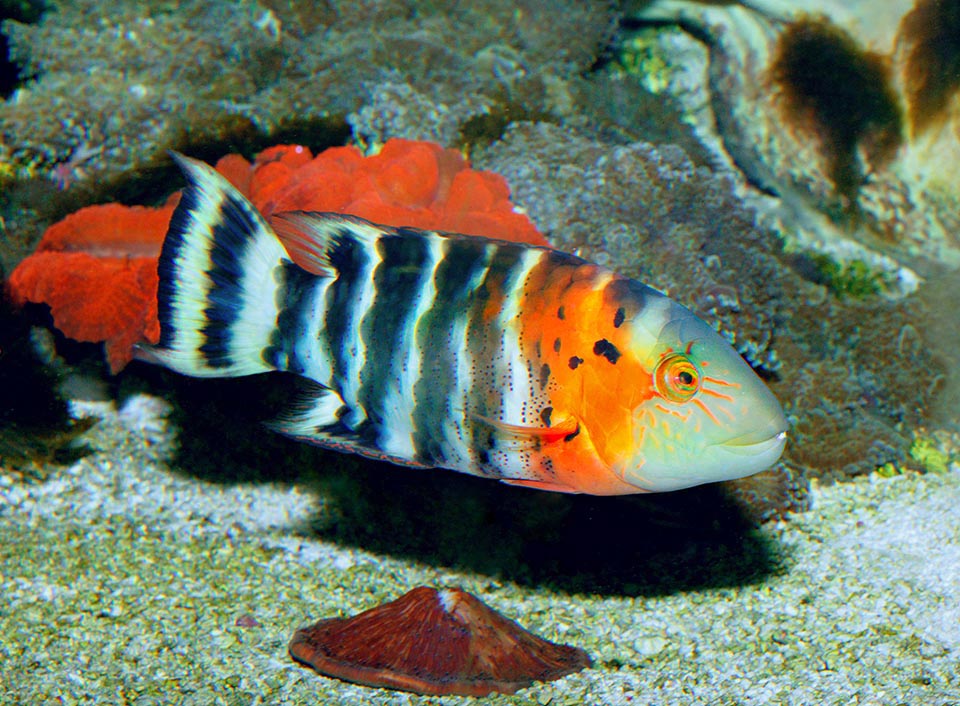
Reproduction occurs in group, often in the afternoon in shallow waters, with males fecundating from above the eggs and patrol territory to protect them © Giuseppe Mazza
The Redbreasted wrasse nourishes mostly of molluscs with shell, crustaceans and sea-urchins, which it breaks by means of its strong jaws and the four solid incisors.
The spawning occurs in group, mostly in the afternoon and in shallow waters, with the males aloft fecundating and patrolling the territory to protect the eggs. The ritual is usually concluded in three hours.
The larval stage, entrusted to the currents, lasts about 26 days and the appearance of the young is quite different from that of the adults. The snout is more elongated, the red-orange spot is absent and the background colour is olivaster with few white bands.
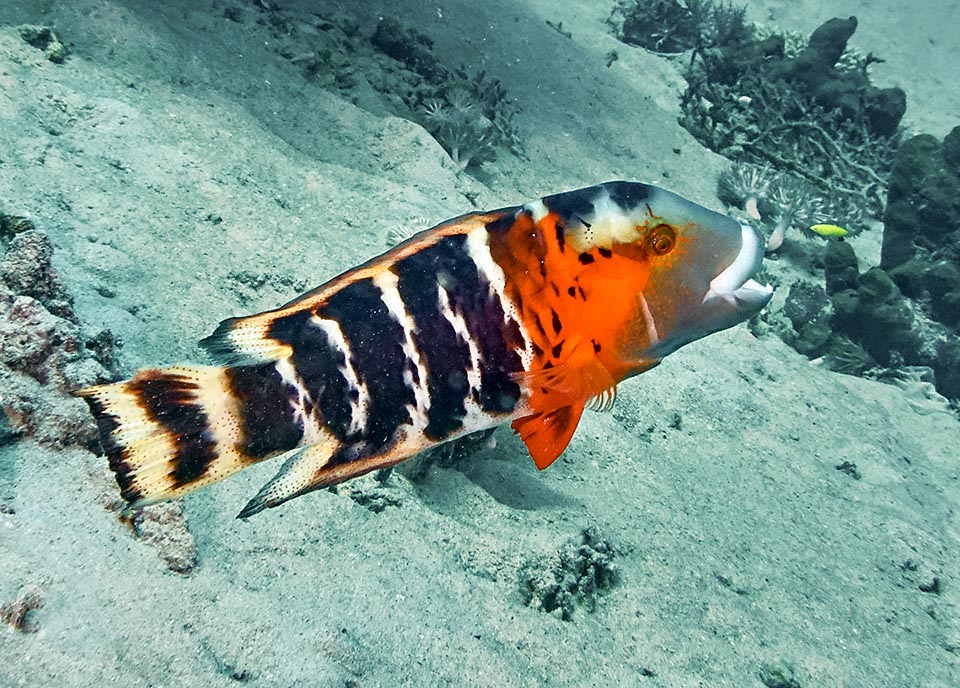
The elderlies, majestic, reach 40 cm in length. The species appears as not endangered in the IUCN Red List but the resilience is modest © Ana Carrapiso
Even if after the IUCN experts the danger for the species is presently modest, even if various local rules forbid the fishing of small specimens for alimentation, and even if Cheilinus fasciatus live quietly in the sea reserves, the fact is that the time of doubling of the populations is of 4,5-14 years and the fishing vulnerability index already marks 39 on a scale of 100.
Synonyms
Sparus fasciatus Bloch, 1791.
→ For general information about FISH please click here.
→ For general information about BONY FISH please click here
→ For general information about CARTILAGINOUS FISH please click here.
→ To appreciate the BIODIVERSITY of BONY FISH please click here.
→ To appreciate the BIODIVERSITY of CARTILAGINOUS FISH please click here.
